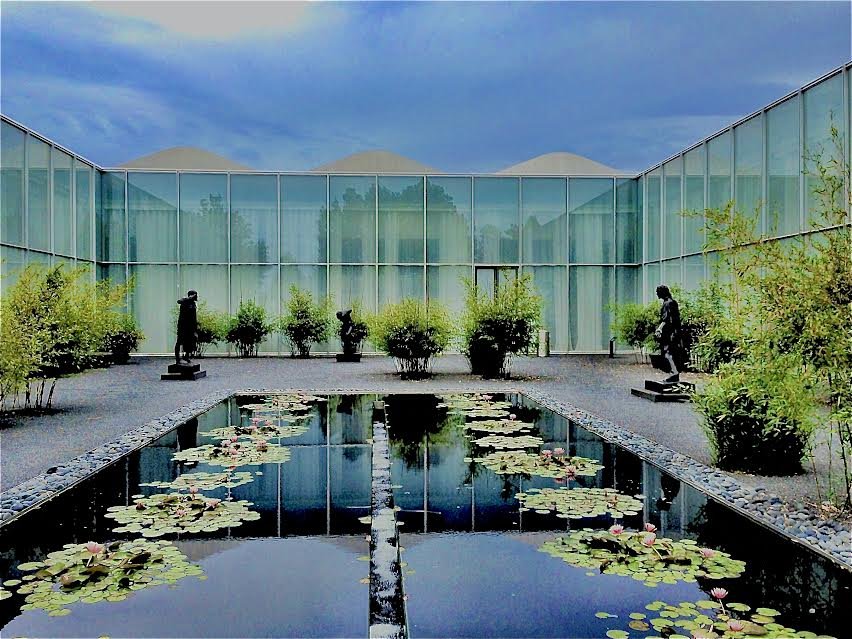
Architect Thomas Phifer, North Carolina Museum of Art.
Between two buildings with one hour to shoot
One morning I flew down to Raleigh, North Carolina: I was planning on photographing two buildings for a new book. I imagined Raleigh as one might imagine a foreign country: Silly fun to consider what I may see of Sir Walter Raleigh, Queen Elizabeth, Southern politics and the historic Carolina basketball programs all in one breath. I have been less and more ridiculous at times.
Discovery is an experience that should only be viewed in a dream. That is the best way to remember it for a lifetime.
The “Devils Tower” is such an experience. A sacred place where light rests in your mind: You merely pop your head atop the “Butte” and peek below to see what is inside: It might be a deliverance of magic: Aladdin’s lamp is a similar place: But the lamp is not real, and your dreams are. Take an existential leap. You never know what you might discover.
When I landed in Raleigh, I heard the pitter-patter: It is a sign that the time is near: time is evolving: light is evolving: It is time to facilitate those electrolytes: It is time to make some pictures.
The sun’s light is one of photography’s greatest weapons: Utilizing all of photography’s tools to know where the light will be and catch a glimpse is essential: The sundial is possibly an alternative tool. Though I cannot imagine watching the seemingly slow movements of a sundial while preparing to make a photograph: My heart would fail: I merely need to know where to be and when:
Certainly the invention of the sundial at one point changed the way all souls lived their lives: But for this photographer run and dance are the two words that manifests internally who I am and what I need to do:
The distance between where I am and where I need to be: I look to the skies and see what the sundial cannot explain: There will be sun, and there will be cloud cover: But when.
The well paid taxi driver was accelerating quite handsomely between my two destinations: I was imagining the distance as the crow would fly: I was dreaming under miles of of oak tree canopies. Twelve minutes separated two sets of photographs: I had a little more than an hour to make something credible.
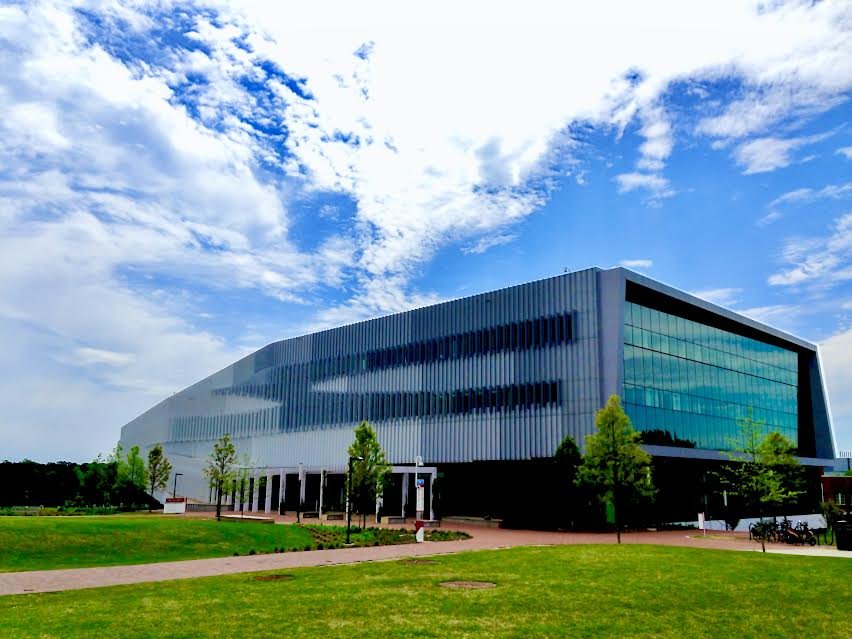
Architect: Snohetta. James Hunt Library, Raleigh, North Carolina.
What transpires between the two destinations is what I refer to as one example of the science of photography. I see the sun illuminating one building: I see cloud covering hindering my approach to another. Yes the hills, mountains, oceans’ currents and the birds fluttering wing’s might be an acceptable blame. Maybe I could blame the one-hundred and eighteen elements of the periodic table. That may or may not be true: the interesting part is that my mind is afire and the taxi driver is loving it: He knows well the twelve minutes between destinations, but I still rage “drive faster”.
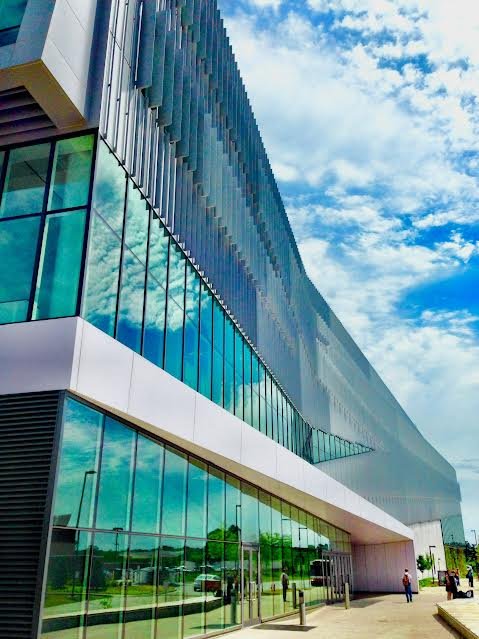
Snohetta’s James Hunt Library.
The great ice hockey player Wayne Gretzky said: “You need to shoot and never stop”. He is referring to scoring goals. There is some truth in that: There is a simpler truth in architectural photography: A photographer interprets the truth: There is only one snap that matters
If you might imagine the story of the four orcas: Four orcas circling in tandem an iceberg: Fear was their greatest weapon: the arctic seal could only espy the inevitable: The whale’s meal: The inevitable is such an enriching part of my imaginations journey: The inevitable is not a thousand shots to capture one moment: The inevitable is a mere one snap: It is the image where you celebrate what is behind door number one, two and three: The photograph is made: what happened before, what may have happened after: Only the orcas and seal know.
I was photographing the James B. Hunt Library by the architectural firm, Snohetta. I was also photographing Thomas Phifer’s North Carolina Museum of Art.
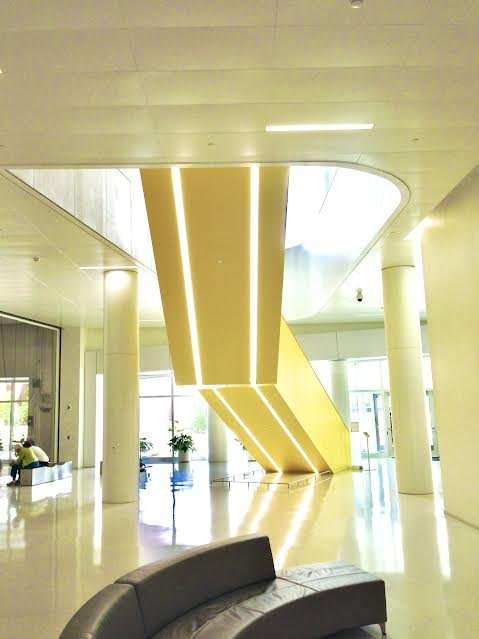
Snohetta.
I wondered where the light will land: I wondered how long will the lazy cloud cover would alter my needs. If the cumulus clouds holds their sway for too long the objective beauty may be missed.
According to the weather report in Raleigh North Carolina: Today’s weather will not be like yesterday, and tomorrow will not be like today. Now is my time.
Most people who have witnessed me making photographs have wondered why I dance while making pictures: the buildings are not moving, why is the photographer: The simple answer is that the light moves and the lens refuses to see the picture that was framed a fraction of a second before: so we move: We being me and my camera: we move to not a particular sound but to the light the camera sees. Both projects had me running and dancing: I saw what I needed to see.
When the taxi driver drove me back to the airport, he cautiously asked me if I had a successful trip.
I told him that for one day, I saw what my camera saw was the best moment to go “snippety-snap-snap”.
There might be a thousand shots on goal to take as Wayne Gretzky attests to: But the framing of a single photography moment is what I live for: I live in my imagination: I dream about lives to live: I wish I could be the little boy who languidly draws pictures of dinosaurs or other imaginary moments:
If I don’t get up and run, I will miss the light.
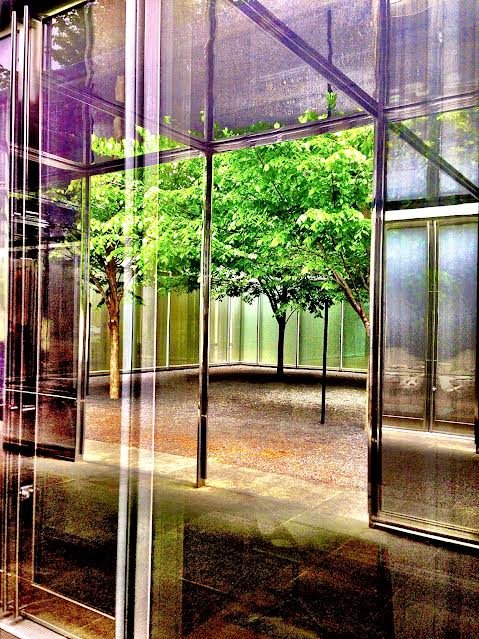
Thomas Phifer’s North Carolina Museum of Art: Raleigh North Carolina.
The post Architecture of Cities: The World appeared first on CounterPunch.org.
This content originally appeared on CounterPunch.org and was authored by Richard Schulman.
Richard Schulman | Radio Free (2024-01-05T06:18:45+00:00) Architecture of Cities: The World. Retrieved from https://www.radiofree.org/2024/01/05/architecture-of-cities-the-world/
Please log in to upload a file.
There are no updates yet.
Click the Upload button above to add an update.